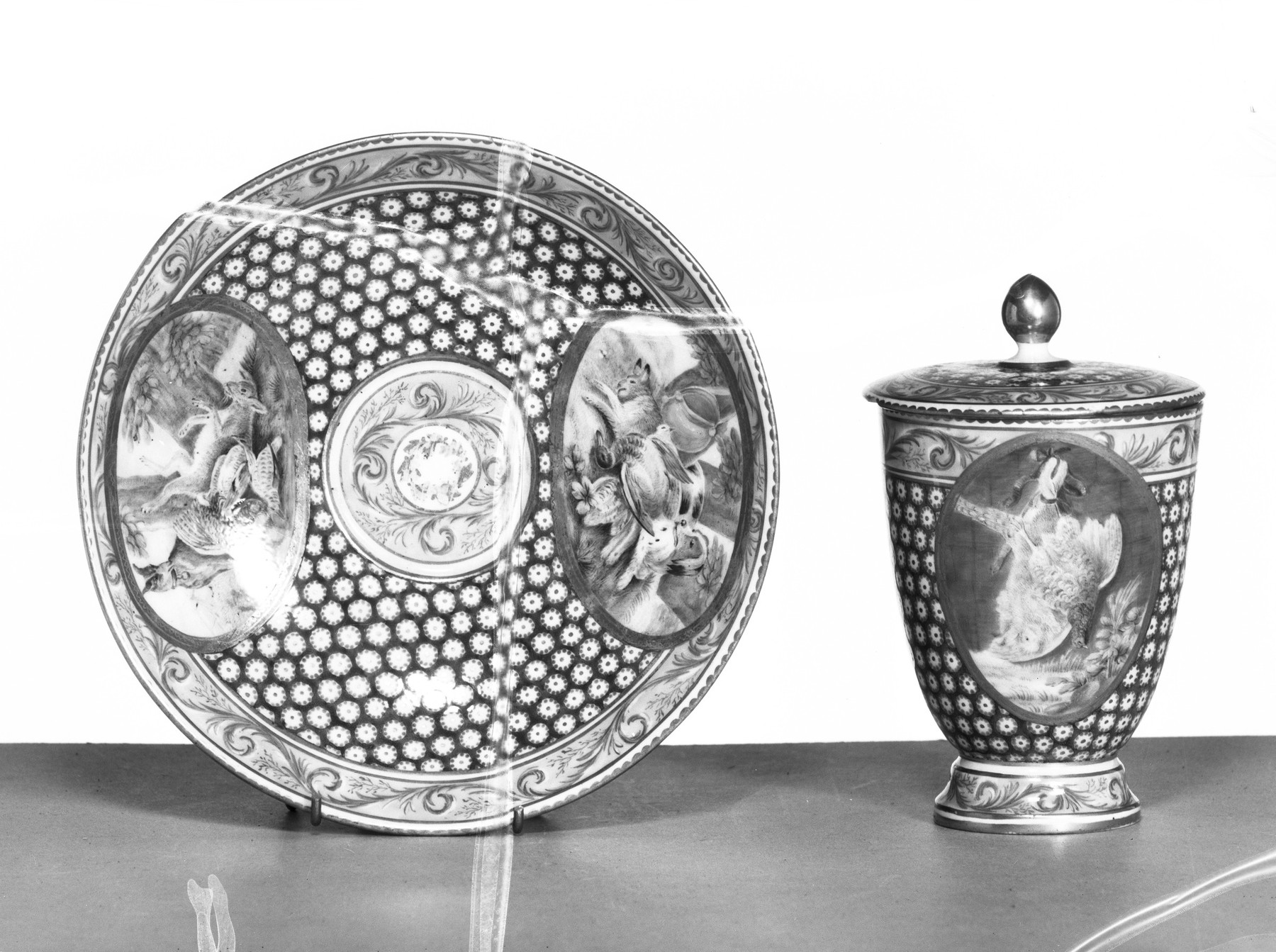Covered Cup and Saucer (gobelet ‘à lait’ et soucoupe)
This covered, handleless, bucket-shaped cup and saucer would primarily be used to drink hot and cold, unadulterated milk drinks. In the 1770s and 1780s drinking milk camed to be thought of as healthful and it was often consumed with warmed bread, which could be served in cup’s matching saucer. This particular saucer is not as deep as most that accompany milk vessels, suggesting that people would not pour their drink into this saucer, as they might do with other gobelet ‘à lait’ et soucoupe sets. Ornamented with two reserves, or areas reserved for imagery, the cup presents still life scenes of dead game animals strung up with ribbon, hanging from a hook; one reserve presents two mallards, while the other contains a hare and pheasant. These same animals appear in the imagery of the saucer. In each of the main reserves, the hare, two mallards, and pheasant are piled up at the base of a tree; each reserve presents the dead game in a different configuration, accompanied by a different hunting dog. The imagery on both the cup and saucer recalls the still life paintings of Jean-Baptiste Oudry and Alexandre-François Desportes.
The factory mark on both the cup and saucer are quite unusual. Rather than containing the typical Sèvres factory seal of crossed “Ls,” both pieces have two sixteenth-notes neatly rendered beneath the word “Sevre.” We know the sixteenth-notes are the personal mark of the painter Louis-Gabriel Chulot, whose long career at Sèvres spanned from 1755 to 1800. “Sevre” is somewhat confusing, as this combination of letters was never an official mark of the manufactory in the 18th century. However, under the First Republic from 1800 to 1802, Sèvres adopted a new official cipher: “sèvres” painted in blue or gilding. Did Chulot simply misspell the factory’s name? If so, these pieces date to the early 19th century and their ornamentation would have been incredibly out of fashion, as the style of game imagery present on both cup and saucer was more representative of mid-eighteenth-century tastes.
Inscription
Geographies
France, Sèvres (Place of Origin)
Measurements
Cup, Saucer, and Lid (A,B,& C) H: 5 1/2 × Diam: 6 11/16 in. (14 × 17 cm); Cup and Lid (A & C) H: 5 3/16 × W: 3 1/4 in. (13.1 × 8.2 cm); Cup (A) H: 4 × D: 3 1/16 in. (10.1 × 7.8 cm); Saucer (B) H: 1 1/4 × Diam: 6 11/16 in. (3.2 × 17 cm); Lid (C) H: 1 3/8 × W: 3 1/4 in. (3.5 × 8.2 cm).
Location in Museum
Not on view
Accession Number
In libraries, galleries, museums, and archives, an accession number is a unique identifier assigned to each object in the collection.
In libraries, galleries, museums, and archives, an accession number is a unique identifier assigned to each object in the collection.
48.699


